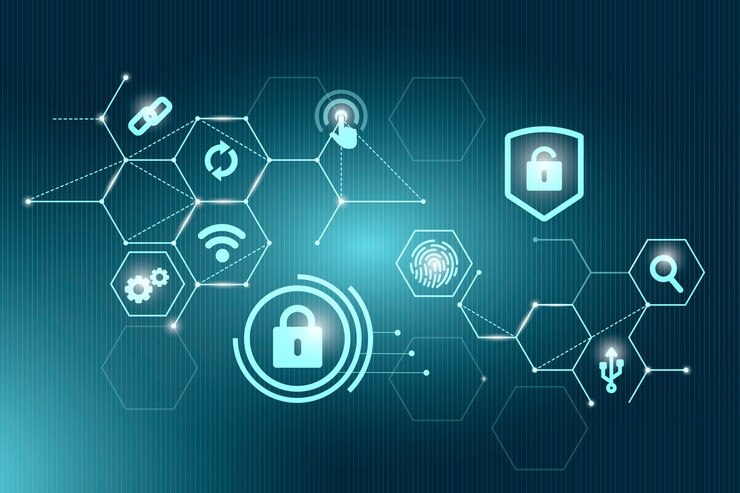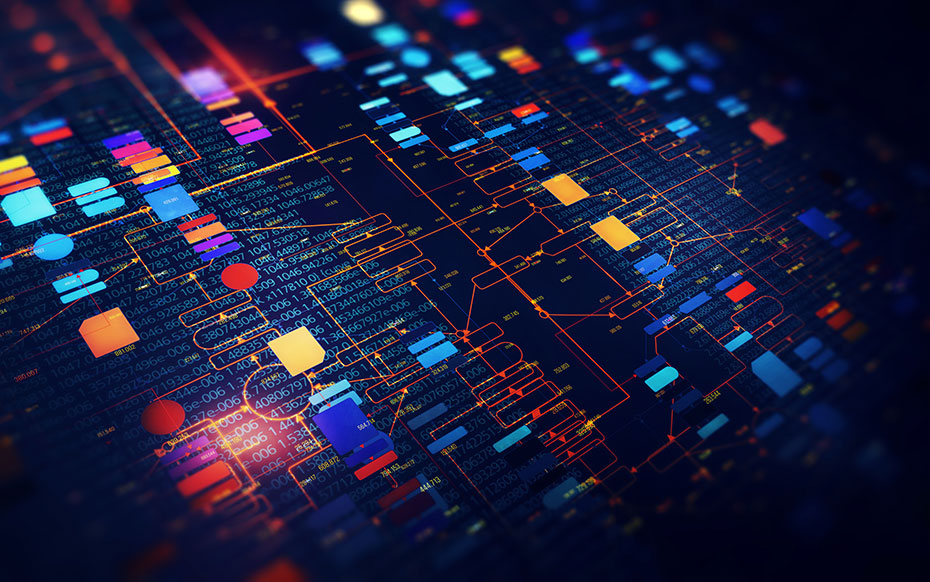Superpowers don’t fight wars on the field anymore because we live in the age of cyberwarfare. Similarly, the risk of someone breaking into your house is way lower than someone hacking your computer or your network. You may not have anything important enough on your personal computer to attract a hacker, but organizations house extremely sensitive information like financial access details, social security numbers, I.D. documents, and much more.
It’s imperative that companies invest in a private, secure network to protect themselves from internal and external cyberattacks. However, the need for cybersecurity goes beyond a moral obligation to protect your clients’ data. IBM issued a report in 2024 that estimated the global average of a single data breach is nearly 5 million USD. Clearly, you need to protect yourself, and any good network security plan has primary branches:
- Prevent unauthorized access to your network.
- To detect cyberattacks in real time.
- People who need access get it at the right time.
This article will cover all the different types of network security, their important branches, the best tools to protect yourself, and all the related technologies in network security.
Types of Network Security
A robust cybersecurity program has several layers of protection. These layers are typically segmented to minimize the risk of hackers gaining access to your entire network even if they get into one part.
Access Control: We mentioned earlier that the most important feature in a firewall isn’t the barrier between you and hackers but letting the right people in. You need access control mechanisms that restrict user access, not block it entirely. We can break down this concept into three distinct sections: user authentication, role-based access control, and network segmentation.
Authentication refers to the verification process for your users—it ensures they are who they claim to be. You can implement passwords, biometric access, two-factor authentication, and a whole suite of techniques to improve your authentication process.
Role-based access control policies are built on the same principle. It gives users access to information necessary for their job functions and nothing else. This simple addition has more benefits than just improving security. For instance, junior designers may be able to edit projects but can’t launch them or send them to clients before completion. These are the basics for network segmentation.
However, the best feature for access control is ‘foolproofing’ your network security. More often than not, it’s the carelessness of an employee that introduces a vulnerability into your system. NAS solutions do regular risk assessments on user endpoints, which means they make sure the antivirus systems are updated on individual systems that access your network. The best NAC systems will automatically update and fix systems that aren’t following the necessary security protocols.
Firewalls: Universally regarded as the coolest title for a security feature, firewalls are your first line of defense against hackers. It’s a filter between your private network and the internet itself that monitors all ingoing/outgoing network traffic and automatically blocks malicious activity. The growing IT market in KSA has made it more vulnerable to cyberattacks, with the Trend Micro Annual Cybersecurity Report estimating close to 110 million threats in 2022 alone.
Typically, firewalls are deployed on the edges of a network to monitor external traffic, but you can also use them to boost internal security. The best cyber defenses use firewalls to segment their network, like compartments in a ship that prevent the whole hull from flooding in case there’s a leak. If a hacker makes it into one sector, they’ll be blocked from infecting your whole network.
Intrusion Detection and Prevention Systems (IDPS): Firewalls monitor all traffic, so they serve a more general purpose. This branch of network security can be broken down into intrusion detection and intrusion prevention. A detection system beefs up passive security by looking for signs of intrusion and alerting administrators of potential threats. A prevention system is way more active and takes measures in real time to stop a potential hack. They can block all traffic, disconnect the network, and reset the system. However, both systems put together specialize in preventing brute force attacks and denial of service attacks.
Antivirus and Anti-Malware Software: You probably don’t need an introduction for antiviruses. They’ve been the bread and butter of network security since Windows 98, and with good reason. Your antivirus does all the legwork in your security strategy—they scan all your files and programs for threats and quarantine infected files to protect the rest of your system. Their importance for IT service-centric economies is visible through the surge in demand for antivirus software in KSA since 2012.
Encryption: If your data and communication aren’t encrypted, they’re extremely vulnerable. It’s impossible to be certain your data is invisible in transit to malicious actors, and if they do manage to get access, you want the data to be in a format they can’t decipher. That's essentially what encryption is—it scrambles the data into a coded format that only unscrambles itself once it reaches the target system.
Virtual Private Network (VPN): VPNs are just as important in an office as they are in domestic environments. Having a secure, encrypted connection to the public internet lets you access websites invisibly. However, the biggest benefit is securing your remote workers. It enables them to access the company network without dragging in unwanted users.
Application security: Businesses don’t create specialized programs for all of their business functions. That would be too expensive and time-consuming. Instead, they use applications bought from IT companies. However, application programming interfaces tend to be one of the most vulnerable parts of a network security infrastructure. Most companies host their apps on public clouds, which hackers can exploit with ease. To defend yourself, use a combination of web application firewalls, runtime application self-protection, static application security testing, and dynamic application security testing.
Email security: Anyone who’s worked in a large organization before has probably been forced to take a phishing protection training program. As annoying as they are, they’re extremely important. IBM statistics report that phishing is by far the most common cyberattack method because it gives hackers a direct inroad into your network. While it’s an industry standard for companies to have built-in spam filters and message encryption, you may need features like sandboxes and isolated environments where security teams can inspect emails for malware.
Network Security Technologies
The section above dealt with general branches of network security, but we feel it’s imperative that you understand how they work in more detail. Below are the methods and technologies you can use to armor your network.
Cryptography: We mentioned encryption above, but it’s worth understanding the concept it’s based on. Cryptography is the overarching field of securing communication and data through codes. Encryption, decryption, and digital signature recognition are all different techniques under the umbrella of cryptography.
Biometrics: While virtual attacks are the most common threat to your network, you can’t ignore the possibility of a physical attack on servers and network routers. They need their own authentication methods to ensure only the right personnel can access them. Biometrics use distinct physical features like facial recognition technology, voice recognition, retinal scanners, or fingerprint sensors to restrict unauthorized usage.
Network Security Monitoring (NSM): All the different methods for monitoring network traffic fall under NSM. Together, they continuously monitor networks to identify anomalies and potential hackers. With a robust NSM strategy, you can protect yourself from port scans, DDoS attacks, and data exfiltration attempts.
Security Information and Event Management (SIEM): SIEM systems collect, aggregate, and analyze security logs from various sources, including network devices, servers, and security applications. This data makes it possible for the tools to identify security threats and generate alerts for the appropriate individuals. The core features of a robust SIEM are:
- Centralized log management to consolidate security logs from disparate sources.
- Threat Detection and Response to recognize and respond to security threats in real-time.
- Compliance and Regulatory Adherence to help organizations comply with industry regulations, such as GDPR and PCI DSS, by providing evidence of security controls and incident response frameworks.
- Forensics and investigation tools that capture detailed logs of network activity.
Data loss prevention (DLP): Considering protecting sensitive information is one of the core functions of a secure network, DLP policies are extremely high on the priority list. There's a wide variety of information security policies you can use to make sure your data isn’t stolen or accidentally leaked. You need to track data flows, encrypt sensitive information, and have an active alert system for suspicious activity.
Endpoint security: The endpoints for a network are the devices that connect to it, and these endpoints need to be secure if you want any chance against modern hackers. You need to have active anti-malware software on all company laptops, desktops, servers, mobile devices, and IoT devices. Endpoint detection tools are typically more advanced tools that monitor the behavior of all aforementioned devices. You can also consider using unified endpoint management software to manage all company devices from a single dashboard.
Cloud security: Modern businesses tend to use the cloud for a wide variety of business functions because it’s cost-effective and efficient for virtual collaboration. However, it also opens up another front for hackers to attack. Thankfully, most of your standard security measures can be extrapolated to the cloud. In fact, most cloud service platforms have built-in firewalls, NACs, and VPNs. If they don’t, you always have the option to get them as add-ons.
User and entity behavior analytics (UEBA): Essentially, UEBA is another form of network monitoring, but we felt it deserves a special mention. It uses AI and machine learning to analyze network traffic and flag abnormal user behavior like insider threats (hackers that have taken over an employee's user accounts).
From Perimeter Security to No-Trust
Now that we’ve had a rudimentary discussion about cloud computing and its implications for network security, we can discuss one of the most significant shifts in security strategy the field has ever seen. Perimeter security was a centralized network that kept all network endpoints, data, apps, and servers on company premises. If you’re in the building, or in the right room, you can access anything you want.
However, the 21st century does not permit this luxury of trustworthiness to just anyone. Organizations have completely transformed digitally and operate on hybrid cloud environments. Data exists everywhere: on company servers, in the cloud, on employee devices, and on IoT devices. Perimeter security simply can’t manage all of these touchpoints, so most IT security teams have shifted to a ‘Zero Trust’ framework.
Rather than giving everybody in a particular area access, all security controls are focused around individual resources and specialized access. Every time anyone tries to access a network, they must be authenticated no matter what. Once they get access, it’s not forever. Their access is revoked as soon as the task in question is completed, and their access is always set to ‘least privilege.
Enterprise Network Security
Everything that we’ve talked about till this point implies the need for a robust network security framework. While they’re great for protecting your company, they can be very complicated to manage because they’re a collection of independent security controls. IT security teams need an enterprise security platform that streamlines the entire process by integrating all of their security tools on a single console. We’ve already discussed SIEM solutions, but additional enterprise network security frameworks include:
Security Orchestration, Automation, and Response (SOAR)
The first step in upgrading any software is automating mundane tasks to remove human error, and SOAR isn’t any different. The key features for any Security Orchestration, Automation, and Response framework are:
- Automated incident response for threat containment, investigation, and remediation.
- Enhanced threat hunting to accelerate threat detection by identifying advanced threats that may have evaded traditional security controls.
- Improved Security Operations Efficiency
Network Detection and Response (NDR)
The next step in modernizing a software tool is integrating AI-powered analytics and machine learning algorithms. NDR uses these programs to monitor network traffic flows. With a robust NDR system, you can
- Identify threats before they do actual damage and minimize the impact of security breaches.
- Use analytics to identify sophisticated threats that have evaded traditional security controls.
- Get access to advanced analytical insights into the techniques used by potential hackers and improve your security infrastructure accordingly.
Extended Detection and Response (XDR)
An XDR system is the best way we have to consolidate all of your security tools in one place. Any good security protocol will have tools integrated in many layers on users, endpoints, applications, networks, cloud projects, and data. An XDR correlated data from all of these sources to gain a holistic view of the entire security landscape and enable organizations to detect and respond to threats effectively.
Network Security as a Service in KSA
With all the different sections and related technologies we’ve mentioned in a network security infrastructure, managing it yourself can be extremely expensive and time-consuming. You want to focus your time and your resources on your actual business functions, which is why it can be a good idea to outsource your network security. That’s where NSaaS companies come in.
KSA has been investing billions into it’s IT industry, and has become a global hub for innovation and technology. As a result, companies in the region have been forced to recognize the significance of robust security networks. With the government aiming to increase the technology sector to 5% of KSA’s GDP by 2030, the following region-specific benefits make network security a core feature of any virtually conducted business.
KSA has developed strict regulations for corporations that deal with sensitive information, and noncompliance can shut your operations down or force you to pay heavy fines. NSaaS companies take the burden of regulatory compliance off your plate and focus on the KSA Cybersecurity framework.
- NSaaS firms make sure critical security infrastructure is up and running at all times, including power grids, transportation systems, and financial institutions.
- There has been a massive surge of remote work across the world, but IT service-based economies use this trend more than most. KSA-based companies work with professionals and clients from all over the world and need NSaaS companies to make sure their remote work platforms are secure.
- The sole purpose of NSaaS firms is to protect your organization. They have specialized personnel and tools dedicated to your security, which makes them better equipped than you could ever be. This gives small and medium-sized businesses in KSA the opportunity to compete with larger firms without developing expensive security infrastructures themselves.
No matter the industry you’re in, if you want to conduct a business in the 21st century, you’re going to be on the internet, and that means you need a network security strategy. The tools, methods, and technologies we’ve mentioned in this article should give you the direction you need to protect yourself, your data, and your clients.






